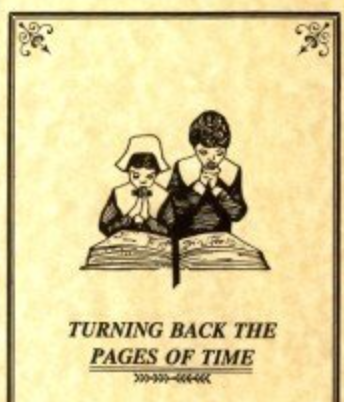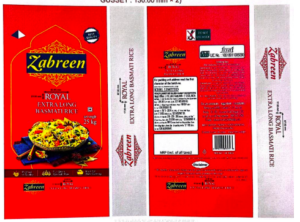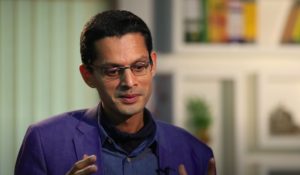
[This post is authored by Prachi Mathur and is part II of the three-part post on terms of copyright and translations. Prachi, who wrote this while interning with SpicyIP, is a Third-Year B.A., LL.B (Hons) student at the National Law School of India University (NLSIU), Bangalore. Please note that for the parts where the source material was in Hindi, translations have been done by Prachi.]
In Part I of the post, I discussed the relevant context for the term of copyright protection in India. In this part, I shall focus on the notable stances taken by the parliamentarians during the debate.
Proponents of Shorter Terms
Let’s start by taking the example of two of the most prominent critics of the proposed 50-year period.
The first is the parliamentarian Kishan Chand who forcefully contended (p. 142) that the current limit of 25 years after the death of the author could be insufficient in certain cases, particularly when authors lived for an extended period after creating their works. Chand proposed an outer limit of 30 years, combining the existing 25-year period with an additional maximum of 5 years. His reasoning was that an author could live for several decades after completing a work, and extending copyright by another 25 years would result in an excessively long period of 85 years. On the other hand, if an author died shortly after publication, their descendants would only benefit from copyright protection for 25 years. Chand believed that prescribing a maximum period of 30 years or the lifetime of the author (whichever is later), would serve the interests of society, the reading public, and those who enjoy art and music.
Supporting Chand’s viewpoint, Govinda Reddy (page 87-88) agreed that an excessively long copyright duration would hinder the broader benefits that society seeks from these works. Reddy contended that if a book holds commercial value, it would be commercially exploited within a decade, benefiting both the author and the publisher. Conversely, if a book fails to appeal to the public and generate returns, extending copyright for an extended period would serve no purpose. Reddy proposed specifying a timeframe within which authors and publishers would have received adequate returns. Beyond that point, if a work of art retains its value, it should be made freely accessible to the public. Reddy believed that a copyright duration of 25 years after the author’s death was too long and could be reduced to ten years. According to him, within this timeframe, authors would have received their due returns if their work possessed significant value.
Other suggestions included U.M. Trivedi’s suggestion, as noted in the JPC report, of restricting the term to 5 years after the author’s death “provided that his wife survives him”.
As a noted earlier that the Berne Convention prescribed a term of 50 years for all the ratifying states to abide by. Curiously, most of the House seemed uninformed about India’s obligations under the Berne Convention (no wonder that both the Houses had ratified the Berne Convention without much debate.) More so, Kishan Chand was “optimistic” that if India reduces its term of copyright to 25 years, other Berne signatories would follow suit! (page 143).
In general, proponents of shorter terms stressed the importance of public access to creative works and the potential for works to contribute to the cultural heritage of the nation. They argued that excessive copyright terms could hinder innovation and restrict the availability of works for creative transformation and reuse.
Proponents of Longer Duration
On the other hand – and quite unsurprisingly – the lobby of authors, editors and publishers in the parliament argued for longer copyright terms, emphasizing the need to incentivize creators and provide them with economic benefits for a significant period.
P. V Kane argued that extending the duration provides a crucial incentive for authors to write (p. 91-3)He believed that the society should not have a claim on author’s works for an extended period of time. He echoed the view that an author should have a reasonable opportunity to profit from their creative works and be rewarded for their efforts. This argument proceeds on the logic that by granting authors exclusive rights over their works for an extended period, they are encouraged to invest time, energy, and resources into producing high-quality content. As such, a longer copyright duration ensures that he has a fair chance to recoup his investment and derive financial benefits from his creation. Arguing in 1955 – a time of widespread poverty in India, Kane stressed on a longer duration of copyright for providing financial sustenance to authors (p. 93).
Chandravati Lakhanpal (p. 200-207), another parliamentarian, highlighted the disparities between the conditions faced by writers and artists in the country compared to Western countries like the U.S.A., UK, and Russia. The speech was made originally in Hindi wherein it was argued that there are distinct differences in terms of the educational standards and literacy rates between the two contexts. She points out that in Western countries, a higher percentage of the population is educated, with 60 out of 100 people being fully educated. In contrast, the literacy rate in India is significantly lower, with only about 10 out of 100 people being considered literate. Moreover, the number of readers of books in her country is even lower. She notes that books published by foreign authors are printed and sold in large quantities abroad, including millions of copies. However, she argues so is barely the case in India where authors are mostly indigent. Along similar lines, Lilavati Munshi (p. 215-218) pointed out that the initial proposed shorter duration could cause significant issues, particularly considering the time-consuming nature of book publication in her country (the original speech was in Hindi). Without copyright protection, finding individuals willing to invest in publishing such works becomes challenging. I think it was particularly important to caution against mechanical reproduction of Western countries’ copyright provisions, and even the Berne convention for that matter (the Brussels text overwhelmingly represented the developed countries. A case in point is also the fact that the appendix on Special Provisions Regarding Developing Countries was only added in 1971)
Accepting the increase in the duration of copyright from the original bill, Shrimali highlighted two main reasons for it (p. 89, 14 May; p. 2217, Lok Sabha Debates). The first one being what the proponents of longer terms forcefully raised – Indian authors are not particularly rich, and, not in a position to commercially exploit longer terms at the cost of restricted public access. At best, they would be able to use the profits from longer terms for self-sustenance. The second reason is perhaps more interesting to note – he highlighted that since India is a signatory to the Berne Convention, India will have to keep the term of copyright as 50 years for foreign authors, irrespective of the term for Indian authors. This would effectively lead to a discrimination between these two categories of authors, with foreign authors getting a more favourable treatment.
In addition, proponents of this viewpoint pointed out that several other signatories to the Berne Convention had already increased their copyright terms to 50 years or more. They argued that harmonizing the copyright terms among member countries would promote consistency and ensure a level playing field for authors and creators worldwide. Moreover, by aligning their copyright durations with these international standards, a country would remain competitive in the global market and protect the rights of its own authors.
The Alternative
However, few such as Lok Sabha member, Sadhan Gupta decried against the mainstream methods of determining the term of copyright as being “arbitrary” and “illogical” (p. 2180-2184). Gupta claimed himself to be the proponent of a more scientific approach to copyright term limitations. He explains that the variability in an author’s lifespan and the time of work production can lead to inconsistencies in the length of copyright protection. Instead, Gupta suggests an alternative approach that considers the author’s lifetime, particularly by extending copyright until he would have reached the age of 90, with a minimum term of 30 years. Gupta raises concerns about the current 50-year term, arguing that it primarily benefits publishers rather than authors, particularly in cases where authors are compelled to sell their rights due to financial constraints. Moreover, Gupta questions the justification for the 50-year term, emphasizing that it does not align with the practices of significant countries, such as the United States and Russia (then, the Soviet Union), which had different copyright systems. [However, now, both the US and Russia are signatories to the Berne Convention. See, for instance, the US’s amendment to its domestic law.]
The term of copyright protection in India has changed over the years through various amendments to the Copyright Act. The most significant of these was the Copyright (Amendment) Act of 1992 which increased the term of copyright protection for cinematograph films from 50 years to 60 years from the year of publication. Other than this, the Copyright (Amendment) Act of 1994 introduced changes to the term of copyright for anonymous and pseudonymous works. For such works, the term of protection became 60 years from the year of publication or 60 years from the year of making, whichever is shorter. Copyright (Amendment) Act of 2012 brought significant changes to copyright law in India. Under this Act, the term of copyright protection for literary, dramatic, musical, and artistic works remains the lifetime of the author plus 60 years. However, in the case of photographs, posthumous publications, cinematograph films, sound recordings, and works of government organizations, the term is 60 years from the year of publication. In part III of the post, I will discuss the evolution of term of translations in India.
- SEO Powered Content & PR Distribution. Get Amplified Today.
- PlatoData.Network Vertical Generative Ai. Empower Yourself. Access Here.
- PlatoAiStream. Web3 Intelligence. Knowledge Amplified. Access Here.
- PlatoESG. Carbon, CleanTech, Energy, Environment, Solar, Waste Management. Access Here.
- PlatoHealth. Biotech and Clinical Trials Intelligence. Access Here.
- Source: https://spicyip.com/2023/12/in-the-crucible-of-debate-analysing-the-evolution-of-copyright-and-translation-terms-part-ii.html
- :has
- :is
- :not
- :where
- ][p
- 1
- 10
- 100
- 14
- 1994
- 2012
- 25
- 30
- 50
- 50 Years
- 60
- 90
- a
- Able
- About
- abroad
- access
- accessible
- According
- Act
- added
- addition
- Additional
- After
- against
- age
- agreed
- align
- aligning
- All
- along
- already
- also
- alternative
- amendments
- American
- among
- an
- and
- Anonymous
- Another
- appeal
- approach
- ARE
- argued
- Argues
- argument
- Art
- artistic
- Artists
- AS
- At
- author
- authored
- authors
- availability
- b
- back
- BE
- became
- becomes
- been
- being
- believed
- benefit
- benefiting
- benefits
- BEST
- between
- Beyond
- Big
- Bill
- book
- Books
- both
- broader
- brought
- Brussels
- by
- CAN
- case
- cases
- categories
- Cause
- caution
- certain
- CGI
- challenging
- Chance
- changed
- Changes
- Children
- claim
- claimed
- combining
- commercial
- commercially
- compared
- compelled
- competitive
- completing
- Concerns
- conditions
- considered
- considering
- considers
- constraints
- content
- context
- contexts
- contrast
- contribute
- Convention
- conversely
- copies
- copyright
- Cost
- could
- countries
- country
- cover
- Creating
- creation
- Creative
- creators
- Critics
- crucial
- cultural
- Current
- Death
- debate
- decade
- decades
- derive
- determining
- developed
- developing
- Developing Countries
- died
- differences
- different
- differing
- Discrimination
- discuss
- discussed
- distinct
- does
- Domestic
- done
- dramatic
- due
- duration
- during
- Earlier
- echoed
- Economic
- editors
- educational
- effectively
- efforts
- emphasizing
- encouraged
- energy
- enjoy
- ensure
- ensures
- Ether (ETH)
- Even
- evolution
- example
- excessive
- excessively
- Exclusive
- existing
- Explains
- Exploit
- exploited
- extended
- extending
- faced
- fact
- fails
- fair
- few
- field
- films
- financial
- finding
- First
- Focus
- follow
- For
- foreign
- freely
- from
- fully
- General
- generate
- getting
- Global
- global market
- Government
- granting
- Gupta
- had
- hand
- Have
- he
- her
- heritage
- high-quality
- higher
- Highlighted
- him
- himself
- hinder
- hindi
- his
- history
- holds
- House
- houses
- However
- HTML
- HTTPS
- i
- if
- ii
- image
- importance
- important
- in
- Incentive
- incentivize
- included
- Including
- inconsistencies
- Increase
- increased
- india
- Indian
- individuals
- initial
- Innovation
- instance
- instead
- interesting
- interests
- International
- into
- introduced
- Invest
- investment
- irrespective
- issues
- IT
- ITS
- Keep
- large
- later
- Law
- lead
- Length
- Level
- Library
- lifespan
- lifetime
- like
- LIMIT
- limitations
- lines
- literacy
- literate
- live
- ll
- Lobby
- logic
- Long
- longer
- lower
- made
- Main
- Mainstream
- Making
- Market
- material
- Matter
- max-width
- maximum
- May..
- mechanical
- member
- methods
- millions
- minimum
- more
- Moreover
- most
- mostly
- much
- Music
- musical
- nation
- National
- Nature
- Need
- no
- notable
- note
- noted
- Notes
- now
- number
- obligations
- of
- on
- ONE
- only
- Opportunity
- or
- organizations
- original
- originally
- Other
- out
- over
- own
- page
- pages
- parliament
- Parliamentarian
- part
- particularly
- parts
- People
- percentage
- perhaps
- period
- photographs
- plato
- Plato Data Intelligence
- PlatoData
- playing
- please
- plus
- Point
- points
- population
- position
- Post
- potential
- Poverty
- practices
- primarily
- proceeds
- producing
- Production
- Profit
- profits
- prominent
- promote
- proponent
- proposed
- protect
- protection
- provide
- provides
- providing
- public
- Publication
- publications
- published
- publisher
- publishers
- Publishing
- purpose
- Questions
- quite
- raised
- raises
- Rate
- Rates
- rather
- reached
- readers
- Reading
- reason
- reasonable
- reasons
- received
- Reduced
- reduces
- regarding
- relevant
- remain
- remains
- represented
- reproduction
- Resources
- restrict
- restricted
- restricting
- result
- retains
- returns
- reuse
- rewarded
- Rich
- rights
- Russia
- s
- School
- scientific
- Second
- see
- Seeks
- seemed
- sell
- serve
- several
- she
- Shortly
- should
- Shows
- Signatories
- signatory
- significant
- significantly
- similar
- since
- So
- Society
- sold
- Sound
- Source
- soviet
- special
- speech
- standards
- start
- States
- Student
- such
- Suggests
- Systems
- taken
- taking
- ten
- term
- terms
- text
- than
- that
- The
- The Source
- their
- Them
- then
- There.
- These
- they
- think
- this
- those
- Through
- time
- time-consuming
- timeframe
- to
- too
- Transformation
- Translation
- Translations
- treatment
- Turning
- two
- Uk
- under
- union
- United
- United States
- until
- us
- use
- value
- various
- View
- views
- was
- Western
- What
- when
- which
- while
- WHO
- widespread
- wife
- will
- willing
- with
- within
- without
- wonder
- Work
- works
- worldwide
- would
- write
- writers
- wrote
- year
- years
- zephyrnet












